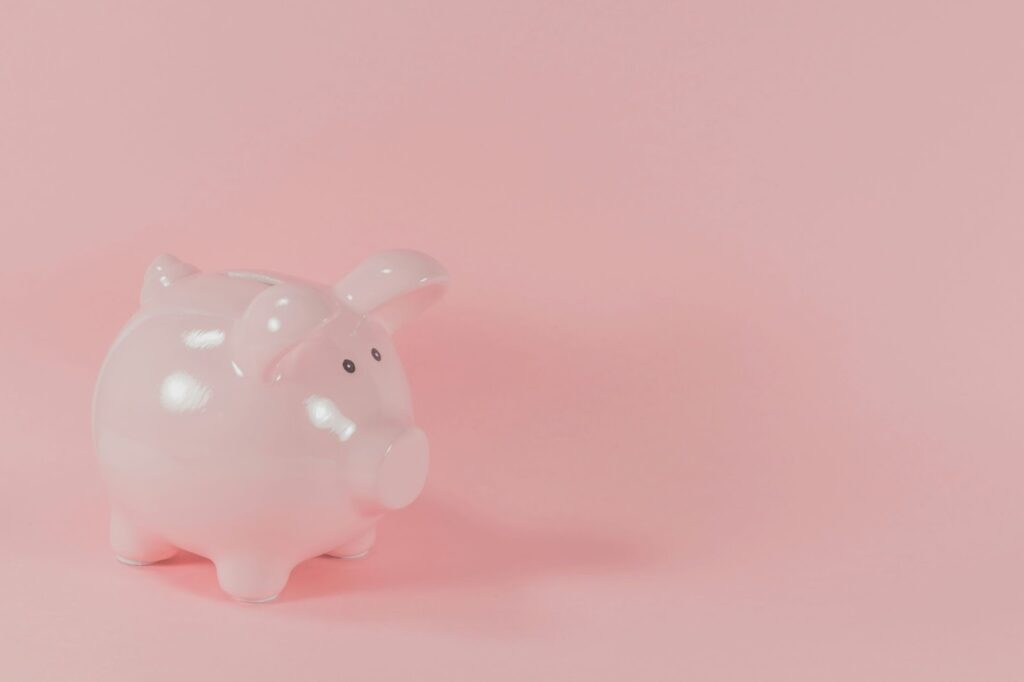£3.1 BILLION spent by Bank of Mum & Dad on weddings last year

The latest National Wedding Survey by Hitched.co.uk reveals that the average cost of a wedding is now £20,700.
Newlyweds don’t always intend to spend this much though, with more than half of those surveyed (59%) revealing that they had gone over their original budget in 2023. While the unstable economy dominated headlines last year, 48% of couples said that the cost of living crisis directly impacted their wedding finances.
Photo by Pawel Czerwinski on Unsplash
The knock on effect of inflation saw more than half of couples (59%) increase their estimated wedding budgets at least once, while 55% opted for more DIY elements than originally planned to counteract the rising cost of living. The survey also revealed that friends and family had a huge part to play in the financing of weddings last year, with 70% of couples receiving financial gifts from friends and family to help pay for their wedding.
Meanwhile, the research showed that parents covered almost two thirds (61%) of the overall wedding costs last year. With latest ONS figures suggesting an average of around 246,897 weddings across England and Wales each year, the Bank of Mum & Dad contributes a whopping £3,117,568,419 towards weddings across the UK.
Zoe Burke, leading wedding expert and editor of Hitched.co.uk says: “With the average cost of a wedding continuing to rise every year, as well as the cost of living, it’s no surprise that couples are having to resort to seeking help from friends and family to foot the cost of their big day.
“Guest experience remains a huge priority for couples, and we’re seeing more than half of nearlyweds ending up going over their initial budget as they seek to provide unforgettable days for their guests.
“It’s wonderful if your parents are able to contribute towards wedding costs, but this isn’t always feasible. I’d always recommend couples who are working towards a tighter budget to look for deals, and out-of season packages as you’ll often find incredible discounts at this time.”
Below, Zoe explains who typically pays for what when it comes to breaking down the wedding budget.
Wedding Reception
Traditionally: As with most of the wedding costs, traditionally the wedding reception is paid for by the bride’s family or both parents together.
Modern day: Though parents paying for the whole wedding isn’t the norm in today’s weddings, this is where families may want to make a contribution. They can cover part of the reception costs by paying for the wedding décor, entertainment or putting some money behind the bar for the guests to enjoy some drinks on the house.
Wedding Outfits
Traditionally: It’s a well-known tradition that the bride’s side is expected to pay for the wedding dress, but there isn’t any real specification as to who in particular should pay. In most traditional situations, it’s the bride’s parents who buy her wedding dress, plus any accessories such as a wedding veil, bridal clutch bag and perhaps some designer wedding shoes.
Modern day: With so many couples now looking to fund their own weddings, more and more brides are choosing to buy their own wedding dresses. One reason for this could be that this set-up can lead to difficulties if the mother of the bride pictures her darling daughter in a princess gown while the bride-to-be wants a minimalist sheath.
Wedding Party Outfits
Traditionally: The bride isn’t expected to pay for her own dress or the bridesmaid dresses as her family are expected to foot the bill for their outfits. Tradition also states that it’s a groom’s family who cover the costs of the wedding suits whether they are hired or bought. Traditionally, the contribution for these outfits stops at the suits and doesn’t cover shirts, ties, shoes and any extra accessories.
Modern day: It seems some traditions do stick when it comes to modern day weddings as even today, the bride’s side (or the bride herself) are usually expected to pay for bridesmaid dresses, especially if the bride has specific requirements and wants her bridesmaids in certain outfits.
The same does not apply to the Groomsmen, though. These outfits are different from bridesmaids as the ushers and groomsmen tend to wear morning dress or a lounge suit – an outfit which can be worn to different events.
Wedding Flowers
Traditionally: The groom pays for decorative wedding flowers at the wedding ceremony venue while the bride’s side of the family pay for both the wedding party flowers and decorative ones at the wedding reception venue.
Modern day: As we know, many couples sit outside of the ‘bride and groom’ stereotype and even those who don’t may want to take a more modern approach to who pays for the wedding flowers. Nowadays, it’s usually the couple who pay for their wedding flowers (both decorative and those the wedding party carry).
However, if you were asking parents for money towards the wedding, paying for wedding party flowers or floral displays is a lovely way to use their contributions towards something memorable that can double-up as a keepsake.
Hen / Stag / Sten Party
Traditionally: Typically, the hen / stag / sten party is paid for by the guests. The maid of honour or bridesmaids, or those charged with organising the party should include the cost of the special guest within the total cost of the event, and divide it up between everyone so each attendee chips in a little bit.
Modern day: The traditional approach isn’t a hard and fast rule; if the hen celebrations are particularly expensive, it may be that the bride and groom are asked to contribute some or all of their share.
If it’s being planned as a surprise for the couple then costs should be kept at an affordable level so that everyone can chip in. Sometimes the partner may also offer to chip in for their lover’s big party, but again this is entirely optional and not something to ask for, but is a lovely gesture.
Wedding Rings
Traditionally: The traditional set up is for each person to buy their partner’s wedding ring, as a token or gesture of your love for each other on the wedding day.
Modern day: Though this is a sweet tradition many couples still love to embrace, couples can easily put their own spin on it. It’s a nice gesture to buy each other’s wedding rings, but it’s perfectly valid to buy them both from your joint account and pay together. You might even get a good deal on a matching set – and if that’s the case, it doesn’t make sense to buy them separately.
If you do want to do something special with your partner’s wedding ring and you aren’t paying for them separately, you could always arrange some secret engraving on the inside of the band once it’s all paid for and you have them in your possession; it’s an even more romantic idea and less dated than the idea of one person paying for the man’s wedding band and vice versa.




